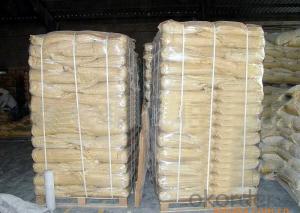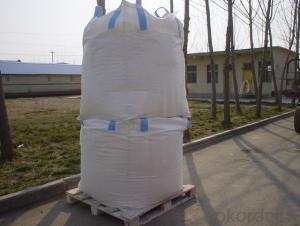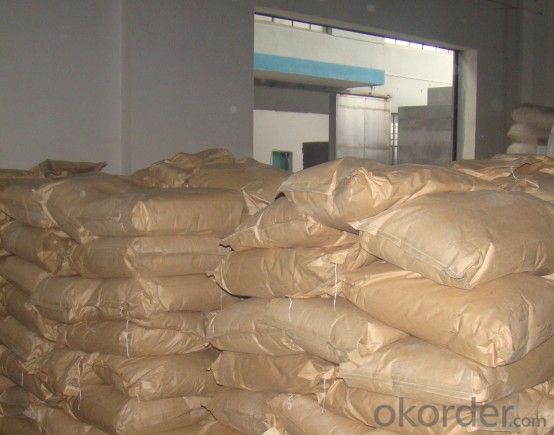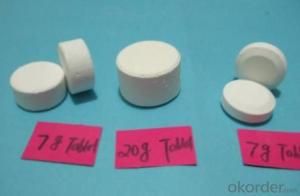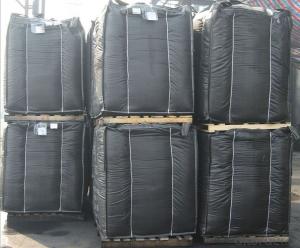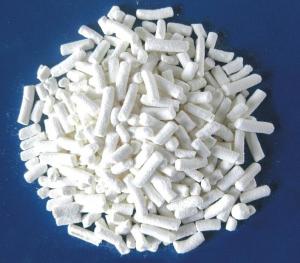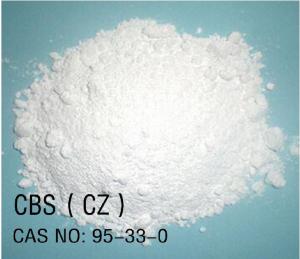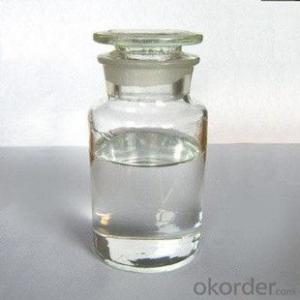RUBBER VULCANIZING ACCELERATOR ·ETU(NA-22)
- Loading Port:
- Tianjin
- Payment Terms:
- TT OR LC
- Min Order Qty:
- 25 m.t.
- Supply Capability:
- 12000 m.t./month
OKorder Service Pledge
OKorder Financial Service
You Might Also Like
RUBBER VULCANIZING ACCELERATOR ·ETU(NA-22)
Chemical Name: Ethylene thiourea
Molecular Formula: C3H6N2S
Molecular Weight: 102.17
CAS NO. : 96-45-7
Executive standard: HG/T2343-92
Specification:
Item | Index | ||
Top Grade | First grade | Qualified Grade | |
Appearance | white powder | ||
Initial M.P, oC ≥ | 195.0 | 193.0 | 192.0 |
Loss on drying, % ≤ | 0.30 | 0.30 | 0.50 |
Ash, % ≤ | 0.30 | 0.30 | 0.50 |
Residues on 150μm sieve, % ≤ | 0.50 | 0.10 | 0.10 |
Properties: White powder. Little bitter. Density is 1.42-1.43. Soluble in water,alcohol, ethylene glycol and pyridine, do not dissolve ether, benzene, chloroform and petroleum ether. No pollution to final products. Stabilization storage
Application:: The product can be used to chloroprene rubber, Epichlorohydrin rubber, chlorinated polyethylene, etc., are particularly suited to non-curing system of the chlorine-butylamine Hopewell accelerator. Can often 100-500 oC , with the right selection system can be the best rapid curing, and the whole parade security. Its products vulcanized high tensile strength, permanent deformation small for W (54-1 type polychloroprene), a non-curing system into effect significantly. It usually with zinc oxide and magnesium oxide together with the use, mainly for industrial products, and coating lines, shoes and other clothing chloroprene rubber products.
Packaging: 25kg plastic woven bag, paper with plastic film bag, Kraft paper bag.
Storage: To keep the bags tightly closed in a cool, well-ventilated place at 25 max, to place the goods on the dry wooden shelf at a height of 500px min. And to avoid from moisture, sunshine, light and fires. The recommended max.shelf life is 2 years.
Note: The product could be ultra fine powder based on customer accurate require.
- Q: Carbon dioxide and hydrogen in the catalyst and heating conditions, the reaction of water and methane, the chemical equation is what
- CO2 + 4H2 = catalyst, heating = 2H2O + CH4
- Q: Why the catalyst after the chemical reaction of its quality and chemical properties unchanged
- In fact, the catalyst in the reaction process has become other substances, but after the end of the reaction, the catalyst has changed back. That is, the catalyst is actually involved in the reaction, except that the amount of catalyst being reacted is as much as it did.
- Q: What are the characteristics of the catalyst in the chemical reaction?
- In simple terms: the catalyst itself is involved in the reaction, the quality of the reaction before and after the same, the ingredients do not change. The catalyst can change the rate of chemical reaction, increase the rate of reaction called catalyst, slow the inhibitor.
- Q: 1. Catalysts can help to bring the reactants together in the correct orientation2. The chemical formula of a catalyst is written on the left hand side (reactant) side of an equation.3. Catalysts can provide a surface on which the reaction occurs.4. Catalysts increase the activation energy.5. Catalysts increase the magnitude of the equilibrium constant, thus favoring product formation.6. "Enzymes" are biochemical catalysts.7. Catalysts increase the rate of a reaction.8. Catalysts are slowly used up during the reaction and need to be replaced.
- 7 is definetly true
- Q: I dont know what it is but when i open up my computer it comes up and it says that its not working? so i really dont know what to do.
- ATI Catalyst Control Centre is a control program for ATI graphics cards. If you have an ATI graphics card, go to the ATI website and download and reinstall the program.
- Q: Could God be Discribed as a Catalyst?
- I'm an atheist but one of my friends explained that thinking to me. Here's what he said. Do objects exist? When objects are created something creates them, right? Objects can't be created from themselves. (Chicken and Egg theory) There needs to be a catalyst for things to be created. I just choose to label this catalyst by the name of God. Technically my friend went into a lot more detail but I don't really remember his exact words. Hope this helps.
- Q: What is the difference between biological enzymes and chemical catalysts?
- The biological enzyme is a class of molecules with moderate molecular weight in the living cells. It is a natural macromolecule catalyst in nature because the enzyme and the reactants are more specific than the reaction of the catalyst with the chemical synthesis of the catalyst (1) High efficiency (2) selectivity good by-product less (3) mild reaction conditions and so on
- Q: In the presence of catalyst, KCl is produced in the thermal decomposition of KClO3.You did not have a catalyst. Did you get the same products for this reaction as you would have with a catalyst?
- A catalyst changes the RATE of a reaction, not the products. So, yes, you get the same products without the catalyst as you do with the catalyst.
- Q: Why does the CuO catalyze the reaction rate faster and faster when catalyzing the decomposition of hydrogen peroxide or tell me how to make the catalyst catalyst faster
- CuO exothermates when catalyzing the decomposition of hydrogen peroxide, so the reaction becomes faster.
- Q: Are the catalysts for upgrading the weapons components that i may have a few of, or very rare ones?
- catalyst's cannot be used apart from transforming items. They will be greyed out at all other times. They always say in the description can be used as a catalyst as well. btw, are you using 36 sturdy bones or vibrance ooze to get the 3x multiplyer strait up? oh yeah, never ever use any item at all that says can be sold for a premium. Always sell those items, they are worth lots of money. And when you start buying components, only ever buy particle accelerator, perfect conductor or ultra compact reactor. Perfect conductor gives least bang for $$$ out of the 3, whereas ultra compact reactor gives most bang for $$$. And the sturdy bones and vibrance ooze for multiplyer purposes. Hope this helped :)
Send your message to us
RUBBER VULCANIZING ACCELERATOR ·ETU(NA-22)
- Loading Port:
- Tianjin
- Payment Terms:
- TT OR LC
- Min Order Qty:
- 25 m.t.
- Supply Capability:
- 12000 m.t./month
OKorder Service Pledge
OKorder Financial Service
Similar products
Hot products
Hot Searches
Related keywords


